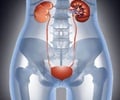- URODYNAMICS: WHAT, WHEN, WHY - (http://www.ichelp.org/page.aspx?pid=990)
- Urodynamic Testing - (http://en.wikipedia.org/wiki/urodynamic_testing)
What is Urodynamic Testing?
Urodynamic testing is an umbrella term that refers to certain procedures and tests that are used to check the functioning and health of the lower urinary tract, which includes the bladder, urethra and sphincters. Urodynamic testing is used to examine the storage and drainage ability of these organs. Most of these tests focus on bladder function and can also reveal the presence of involuntary contractions that may be causing urine leakage from the bladder. For this reason, urodynamic testing is primarily used as a diagnostic tool to investigate urinary incontinence and certain problems that affect the lower urinary tract. Some of these procedures can cause significant discomfort to patients and should therefore be done only when necessary.
Health care providers may ask patients to undergo urodynamic testing if they notice symptoms associated with lower urinary tract disorders such as painful urination, frequent and strong urge to pass urine, urine leakage, problems starting to pass urine or problems emptying the bladder completely and frequent urinary tract infections. Doctors also ask for urodynamic testing if they notice signs of pus or blood in the urine, endometriosis or certain gastrointestinal conditions.
Urodynamic Testing includes the following procedures:
Uroflowmetry – This is a simple test and is one you needn’t be worried about, as it does not cause discomfort. The test is noninvasive and is used to measure the speed of urine flow, which is done using an electronic reader. If the rate at which urine is emptied from the bladder is very low, it may indicate some kind of obstruction in the urinary tract.
Cystometry – Also known as a cystometrogram, this test involves the insertion of a catheter into the bladder to instill fluid into it. This can cause significant discomfort, which is why it is only recommended if absolutely necessary. The test is used to check muscle and nerve function of the bladder. The bladder pressure is also recorded during this procedure. The ‘leak point pressure measurement’ records the pressure at which any leakage of urine may occur. Pressure measurement may be recorded in addition from the rectum.
Pressure-flow Studies – As the name suggests, this test is used to measure both bladder pressure and the flow of urine. This is done with the help of a recording device that is placed in the bladder. These readings can help doctors make a diagnosis as high bladder pressure with low urine flow rate is suggestive of an obstruction, while low bladder pressure with a low flow rate may be indicative of a bladder problem, such as muscle or nerve dysfunction.
Electromyographic Studies – These tests are conducted using special sensors or electrodes to measure electrical impulses and the activity of the muscles when at rest, as well as during contraction and urination. It is used to evaluate the functioning of the bladder, pelvic floor muscles and external urinary sphincter.
Video Urodynamic Studies – Strictly speaking, this is a combination of tests using techniques like fluoroscopy or real time radiography with cystometry and pressure-flow studies. Just as fluid is instilled into the bladder in a standard cystometry, it is filled in this case with a liquid contrast dye instead of saline. This helps with imaging technology, as the dye then appears opaque in the images generated helping doctors to clearly delineate the bladder and urethra. Video urodynamic studies are generally used in more complex cases and when standard procedures used for diagnosis do not yield results.
Postvoid Residual Urine Measurement - This is a test where the amount of urine remaining in the bladder following evacuation is estimated using ultrasound. In some cases, the remaining urine in the bladder is drained with a catheter and is measured. A postvoid residual of 100 ml or more indicates incomplete evacuation by the bladder, which may predispose to repeated infections.
Things You Should Know Before Testing
When undergoing any medical procedure there are certain things you need to make sure of prior to the procedure:
- Inform your doctor about any medications or supplements you are using as some of these can interfere with the test results and may need to be discontinued prior to testing.
- If you have been asked to go in for video urodynamic studies, make it a point to inform your doctor if you are pregnant or if you have any allergies to shellfish, iodine or x-ray contrast dyes.
Tips to Avoid or Reduce Discomfort
If there is any risk of infection you will most likely be advised to follow certain preventive measures:

- Make sure that you increase your fluid intake, consuming at least 2.5 liters a day for the first 2 days after the tests to help flush your system.
- Avoid drinking tea, coffee and other caffeinated drinks for at least 2 days after undergoing the test. These drinks can increase irritation and will prolong any feelings of discomfort that occur after testing.
- When passing urine take your time and make sure that your bladder is completely emptied. Wait for a couple of seconds and try to empty your bladder again if you must, just to make sure its empty.










